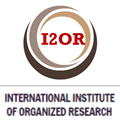Enfermedad hepática grasa no alcohólica. Algunas consideraciones diagnósticas
Resumen
Palabras clave
Referencias
Ascha MS, Hanouneh IA, López R, Tamimi TA, Feldstein AF, Zein NN. The incidence and risk factors of hepatocellular carcinoma in patients with nonalcoholic steatohepatitis. Hepatology [Internet]. 2010 [citado 17 Mar 2016];51(6):1972-8. Disponible en: https://www.ncbi.nlm.nih.gov/pubmed/20209604
Promrat K, Kleiner DE, Niemeier HM, Jackvony E, Kearns M, Wands JR, et al. Randomized controlled trial testing the effects of weight loss on nonalcoholic steatohepatitis. Hepatology [Internet]. 2010 [citado 17 Mar 2016];51(1):121-9. Disponible en: https://www.ncbi.nlm.nih.gov/pubmed/19827166
Pérez Lorenzo M, Duarte Castillo N, Montero González T, Franco Estrada S, Winograd Lay R, Brizuela Quintanilla RA. Prevalencia del hígado graso no alcohólico en muestras de biopsias hepáticas. Rev Cubana Med Milit [Internet]. 2006 [citado 17 Mar 2016];35(4):[aprox. 7 p.]. Disponible en: http://scielo.sld.cu/scielo.php?script=sci_arttext&pid=S0138-65572006000400006&lng=es&nrm=iso&tlng=es
Ratziu V, Charlotte F, Bernhardt C, Giral P, Halbron M, Lenaour G, et al. Long-term efficacy of rosiglitazone in nonalcoholic steatohepatitis: results of the fatty liver improvement by rosiglitazone therapy (FLIRT 2) extension trial. Hepatology [Internet]. 2010 [citado 17 Mar 2016];51(2):445-453. Disponible en: https://www.ncbi.nlm.nih.gov/pubmed/19877169
Valenzuela C, Aguirre C, Castillo V, Ronco AM, Llanos M. Participación del sistema endocanabinoide en el desarrollo de obesidad. Rev Méd Chile [Internet]. 2010 [citado 17 Mar 2016];138(5):621-629. Disponible en: http://www.scielo.cl/scielo.php?script=sci_arttext&pid=S0034-98872010000500014&lng=en&nrm=iso&tlng=en
Graham ES, Angel CE, Schwarcz LE, Dunbar PR, Glass M. Detailed characterisation of CB2 receptor protein expression in peripheral blood immune cells from healthy human volunteers using flow cytometry. Int J Immunopathol Pharmacol [Internet]. 2010 [citado 17 Mar 2016];23(1):25-34. Disponible en: https://www.ncbi.nlm.nih.gov/pubmed/20377992
Méndez-Sánchez N, González V, King-Martínez AC, Sánchez H, Uribe M. Plasma leptin and the cholesterol saturation of bile are correlated in obese women after weight loss. J Nutr [Internet]. 2002 [citado 7 May 2016];132(8):2195-8. Disponible en: http://jn.nutrition.org/content/132/8/2195.full.pdf
Louvet A, Teixeira-Clerc F, Chobert MN, Deveaux V, Pavoine C, Zimmer A, et al. Cannabinoid CB2 receptors protects against alcoholic liver disease by regulating Kupffer cell polarization in mice. Hepatology [Internet]. 2011 [citado 17 Mar 2016];54(4):1217-26. Disponible en: https://www.ncbi.nlm.nih.gov/pubmed/21735467
Callén L, Moreno E, Barroso-Chinea P, Moreno-Delgado D, Cortés A, Mallol J, et al. Cannabinoid receptors CB1 and CB2 form functional heteromers in brain. J Biol Chem [Internet]. 2012 [citado 17 Mar 2016];287(25):20851-65. Disponible en: https://www.ncbi.nlm.nih.gov/pubmed/22532560
Liangpunsakul S, Chalasani N. What should we recommend to our patients with NAFLD regarding alcohol use? Am J Gastroenterol [Internet]. 2012 [citado 17 Mar 2016];107(7):976-978. Disponible en: https://www.ncbi.nlm.nih.gov/pubmed/22764020
Crespo García J, Arias Loste MT. Esteatohepatitis no alcohólica [Internet]. En: Farreras Valenti P, Rozman C. Farreras-Rozman Medicina Interna. España: Elsevier; 2012. p. 335-340 [citado 17 Mar 2016]. Disponible en: https://www.clinicalkey.es/#!/content/book/3-s2.0-B9788490229965000405
Tam J, Cinar R, Liu J, Godlewski G, Wesley D, Jourdan T, et al. Peripheral cannabinoid-1 receptor inverse agonism reduces obesity by reversing leptin resistance. Cell Metab [Internet]. 2012 [citado 17 Mar 2016];16(2):167-79. Disponible en: https://www.ncbi.nlm.nih.gov/pubmed/22841573
Fabbrini E, Sullivan S, Klein S. Obesity and nonalcoholic fatty liver disease: biochemical, metabolic, and clinical implications. Hepatology [Internet]. 2010 [citado 17 Mar 2016];51(2):679-89.Disponible en: https://www.ncbi.nlm.nih.gov/pubmed/20041406
Rakoski MO, Singal AG, Rogers MA, Conjeevaram H. Meta-analysis: insulin sensitizers for the treatment of non-alcoholic steatohepatitis. Aliment Pharmacol Ther [Internet]. 2012 [citado 17 Mar 2016];32(10):1211-21. Disponible en: https://www.ncbi.nlm.nih.gov/pubmed/20955440
Yilmaz Y. NAFLD in the absence of metabolic syndrome: different epidemiology, pathogenetic mechanisms, risk factors for disease progression? Semin Liver Dis [Internet]. 2014 [citado 17 Mar 2016];32(1):14-21. Disponible en: https://www.researchgate.net/publication/221896525_NAFLD_in_the_Absence_of_Metabolic_Syndrome_Different_Epidemiology_Pathogenetic_Mechanisms_Risk_Factors_for_Disease_Progression
Liechti F, Dufour JF. Treatment of NASH with ursodeoxycholic acid: cons. Clin Res Hepatol Gastroenterol [Internet]. 2012 [citado 17 Mar 2016];36 Suppl 1:S46-52. Disponible en: https://www.ncbi.nlm.nih.gov/pubmed/23141894
Ratziu V. Treatment of NASH with ursodeoxycholic acid: pro. Clin Res Hepatol Gastroenterol [Internet]. 2012 [citado 17 Mar 2016];36 Suppl 1:S41-5. Disponible en: https://www.ncbi.nlm.nih.gov/pubmed/23141893
Caporaso N, Morisco F, Camera S, Graziani G, Donnarumma L, Ritieni A. Dietary approach in the prevention and treatment of NAFLD. Front Biosci (Landmark Ed) [Internet]. 2014 [citado 17 Mar 2016];17:2259-68. Disponible en: https://www.ncbi.nlm.nih.gov/pubmed/22652776
Di Rosa M, Malaguarnera L. Genetic variants in candidate genes influencing NAFLD progression. J Mol Med (Berl) [Internet]. 2012 [citado 17 Mar 2016];90(2):105-118. Disponible en: https://www.ncbi.nlm.nih.gov/pubmed/21894552
Kim MS, Kung S, Grewal T, Roufogalis BD. Methodologies for investigating natural medicines for the treatment of nonalcoholic fatty liver disease (NAFLD). Curr Pharm Biotechnol [Internet]. 2012 [citado 17 Mar 2016];13(2):278-291. Disponible en: https://www.ncbi.nlm.nih.gov/pubmed/21470125
Enlaces refback
- No hay ningún enlace refback.
Copyright (c) 2017 Marila Suárez González, Victor Manuel López Mejia, Jesus Manuel Eirin Rey, Esther Lidia González González, Yosvany Medina Garrido, Sarah Esther Díaz Oliva











 15 de enero 2025
15 de enero 2025


